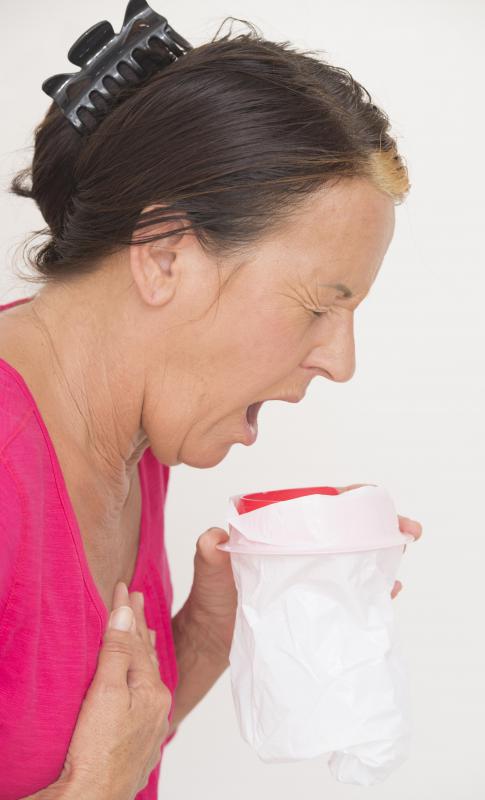At WiseGEEK, we're committed to delivering accurate, trustworthy information. Our expert-authored content is rigorously fact-checked and sourced from credible authorities. Discover how we uphold the highest standards in providing you with reliable knowledge.
What Is Vesicant Chemotherapy?
Vesicant chemotherapy is a type of drug that is given during the chemotherapy process and that can cause blistering and swelling at the site of the injection. In extreme cases, a vesicant drug can go into nearby tissues, also known as extravasation, and can cause tissue or skin necrosis, or dead cells. These cells can cause scar tissue, blood clots or ulcers, and they often have to be treated as wounds. Plastic surgery is sometimes used to attempt to save the area where the vesicant drug has extravasated. There are steps that can be taken to help prevent extravasation during the process of administering vesicant chemotherapy drugs, although the effects can vary, depending on the particular patient.
A few of the common vesicant chemotherapy drugs include tenoposide, daunorubicin and paclitaxel. There are many more possible drugs that can be used during chemotherapy and that can be considered vesicants. Drugs given in vesicant chemotherapy are meant to go into veins, usually through intravenous solutions, but they can sometimes leak into other parts of the body. These are extremely strong drugs that help kill cancer cells, which is why they are capable of doing so much damage. Certain people are affected more by vesicants than others are, but this category of drugs is known for causing swelling and blistering in a large percentage of patients.

When vesicants are given during the chemotherapy process, the patient is informed and told of symptoms to watch for, such as burning, itching and pain in the area where the injection was given. This is different from drugs that are known as irritants, which can cause minor problems but usually do not leave any long-term problems within the body. Doctors and nurses attempt to give vesicant chemotherapy treatments in safe places in the body. Large veins that do not have any bruising are ideal, and a smaller gauge needle helps to ensure that smaller veins will not be affected by the injection.

Prevention is key when dealing with the possible dangers of vesicants during chemotherapy. After a problem such as extravasation has occurred, the area of the body is flushed to remove the medication, ice or heat is applied, and antidotes might be injected. A lot of information is given to patients about what to look for in case of extravasation to help prevent further problems. Drugs that are not for chemotherapy also might be considered vesicants, as can certain materials that are used in biological warfare.
AS FEATURED ON:
AS FEATURED ON:

















Discuss this Article
Post your comments